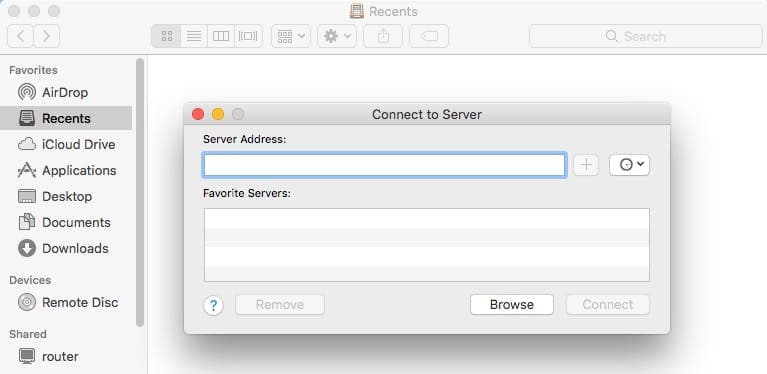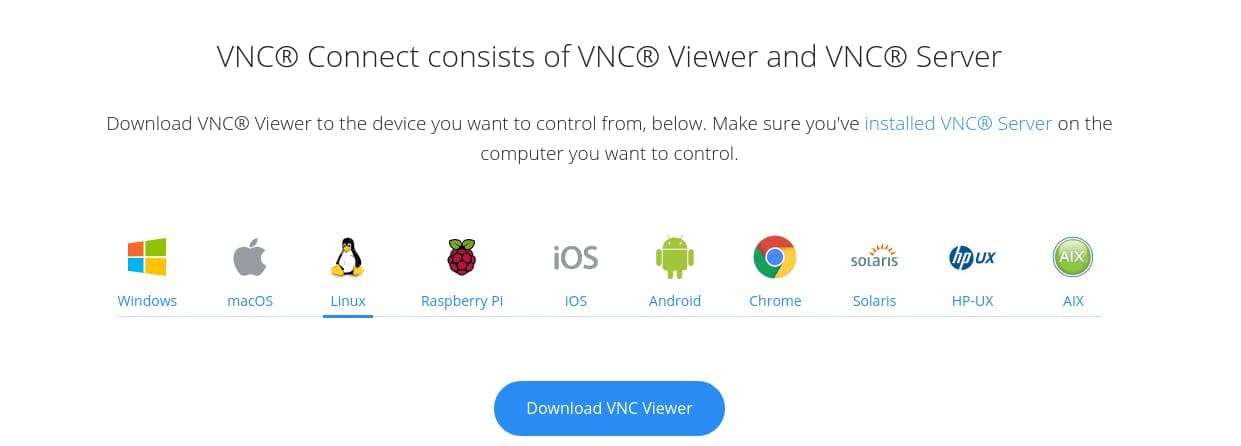Modern servers are “headless,” which means that they consist of only the “box” portion of a computer, rather than including a monitor, keyboard, and mouse. MacStadium’s Mac mini servers fall into this category. In order to interact with, and make use of a Mac mini remotely, MacStadium customers will need to access their Mac from another machine. Below, we’ll walk through the various options for making this networking connection and break out the networking options by use case for easy reference.
Connecting to your Mac mini from your local machine:
There are three broad categories by which a user can connect to a MacStadium Mac mini from a local machine – either from the user interface (UI), from the terminal, or via a virtual private network (VPN). Each of these categories of networking is geared toward distinct user scenarios.
From the UI (VNC):
A UI is the graphical user interface that you interact with via your computer's monitor. For example, a web browser such as Google Chrome or Safari provides a UI that allows you to view websites on your monitor.
Possible use cases: Things you might do with an “in-person” Mac, such as watching or editing video, using macOS apps, and so on.
How to connect: To make this sort of connection to your Mac mini, you’ll need to install some software on your local machine, and – eventually – on your Mac mini as well. In order to do this, you’ll need to make a short-term, insecure connection with either Apple Screen Share (if you are working on a Mac locally) or RealVNC (if you are using any other OS locally). This will allow you to access your Mac mini so that you can install the software required for a long-term solution.
STEP 1:
When your Mac mini is deployed, it will be ready to accept a virtual network computing (VNC) connection. If you are working on a Mac locally, you won’t need to install any software to make this initial connection. If you are using any other OS locally, you will only need to install software locally, rather than on both your machine and your MacStadium-hosted Mac mini.
If your local machine is a Mac:
You can use Apple Screen Share to make this connection. Simply open the Finder, and press command+k. You will then be prompted for the public IP of your MacStadium machine. Once you have access, you will be able to see and use your Mac mini from your local machine.

If your local machine is not a Mac:
You will need to download and install VNC Viewer on your local machine in order to remote into your Mac mini’s desktop environment. Once you have access, you will be able to see and use your Mac mini from your local machine.

Once installed, enter your MacStadium credentials and make the connection.
The caveat here is that the free tier of this software doesn’t offer encryption, so any information sent from your local machine to the Mac mini, or vice versa, could potentially be compromised – thus, the need for step two.
STEP 2:
- TeamViewer – TeamViewer is a professional-grade software that is free for personal use. To use it, you will need to download and install TeamViewer on both your local machine and on your MacStadium-hosted Mac mini. The standout features of TeamViewer include automatic firewall traversal, a contact list, file transfer, and built-in video chat, but the feature that really sets it apart from the rest of the programs in this lineup is the end-to-end encryption of every keystroke, screen image, and mouse movement that goes across the network. If security is a primary concern then TeamViewer is definitely the best choice for you.
- Splashtop – Splashtop operates much like TeamViewer, in that both your local machine and your Mac mini will need to have the software installed. It is distinct in that it is known to perform video and audio streaming at an industry-leading standard, which is one of its top-selling points. You can download and install the free tier, but if that won’t meet your needs for some reason, its paid versions are far more economical than TeamViewer’s paid-tier offerings.
- Other Options - in 2012 we discussed the various VNC options on the market in this blog post.
From the Terminal (SSH):
Possible use cases: Things that you won’t need a desktop environment for, but rather secure terminal access to your Mac mini, such as accessing the file system or running a script written in a general-purpose programming language.
SSH – Using the public IP address in your MacStadium IP Plan, simply run the following:
ssh <username>@<public ip="" address=""></public></username>
Enter your MacStadium password when prompted, and voila! You should have a secure Terminal session started on your mini.
Persistent Connections (VPN):
Possible use cases: Any process that requires a long-standing, secure connection between your local machine and your Mac mini, such as continuous integration (CI) for software development.
VPN – We recommend using Cisco AnyConnect or its open-source equivalent, OpenConnect, to establish a virtual private network (VPN) connection to your Mac mini. Learn more about connecting to your Mac mini via VPN in the MacStadium docs.
Takeaways:
If you are connecting from a Mac, you can use Apple Screen Share to make your initial connection to your mini. If you are working on any other platform, you will need a VNC client of some type to establish the initial connection to your Mac mini. Once you are connected, you can install a server for any other remote control product that suits your taste. Our recommendation is to use RealVNC initially and then install either TeamViewer (if security is your primary concern) or Splashtop (if performance is more important). Once this has been set up, you will probably want to disable screen sharing (aka the VNC server) in the Mac system preferences so that no one is tempted to try to hack your VNC password.
